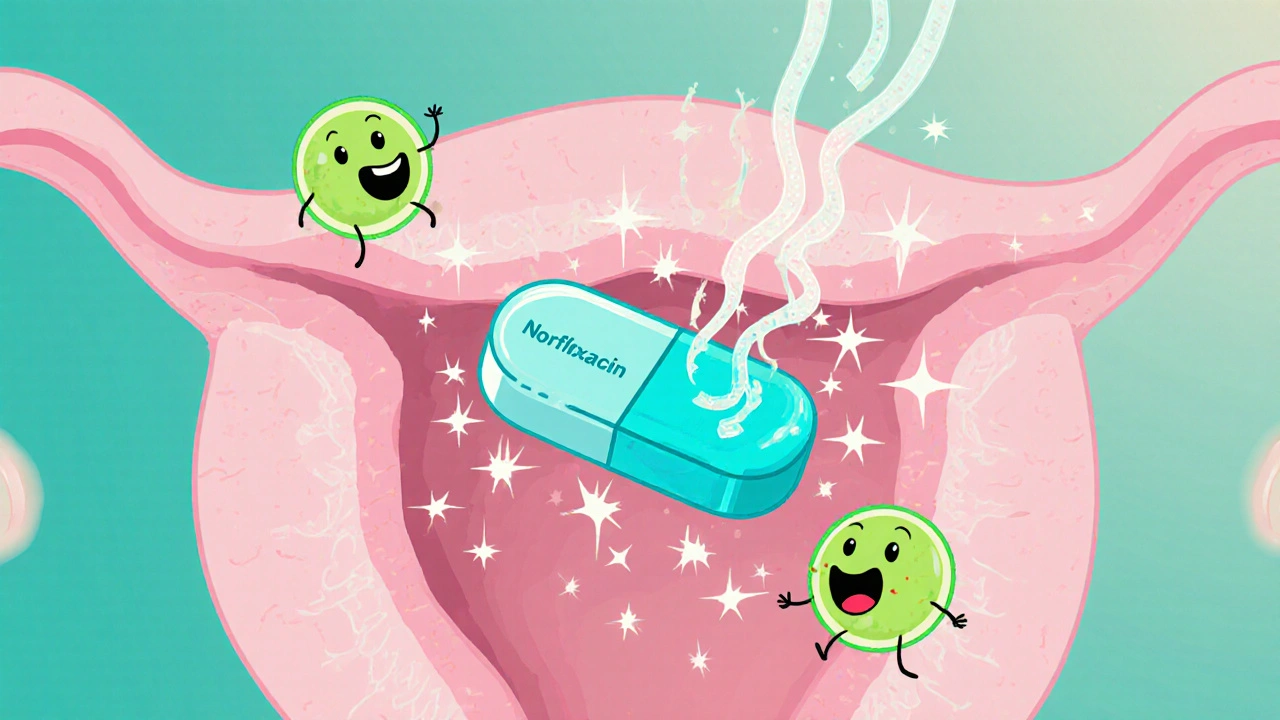Norfloxacin – What You Need to Know
When dealing with Norfloxacin, a broad‑spectrum fluoroquinolone antibiotic used to treat various bacterial infections. Also known as Noroxin, it works by blocking bacterial enzymes that copy DNA, stopping the bugs from multiplying. Fluoroquinolone antibiotics, a class that includes ciprofloxacin, levofloxacin, and ofloxacin share this mechanism and are prized for oral convenience and tissue penetration. Understanding drug interaction, how one medication can affect the safety or effectiveness of another is crucial when adding Norfloxacin to any regimen.
At its core, Norfloxacin belongs to the fluoroquinolone family, which targets bacterial DNA gyrase and topoisomerase IV. This action disrupts DNA replication and ultimately kills the bacteria. Because the drug reaches hard‑to‑access sites like the urinary tract, prostate, and gastrointestinal tract, doctors often choose it for uncomplicated urinary tract infections (UTIs) and certain gastrointestinal infections. The typical adult dose ranges from 400 mg to 800 mg once daily, but kidney function and infection severity can tweak that number. Knowing the dosage helps avoid sub‑therapeutic levels that could fuel resistance.
Typical infections treated with Norfloxacin include acute cystitis, prostatitis, and some types of traveler’s diarrhea caused by Campylobacter or Shigella. The fluoroquinolone class also covers more severe cases like pneumonia or skin infections when other options fail, though clinicians now reserve them for resistant bugs to preserve their usefulness. If you’ve ever taken ciprofloxacin for a bladder infection, you’ve already experienced a close cousin of Norfloxacin, sharing similar side‑effect profiles and warnings.
One of the biggest safety checkpoints is checking for drug interactions. Norfloxacin can raise levels of drugs that affect the heart’s rhythm, such as certain anti‑arrhythmics, and it may also interact with medicines that need an acidic environment for absorption, like some antacids. Taking the antibiotic with dairy or calcium‑rich foods can cut its absorption by up to 30 %, so spacing doses by at least two hours is a good habit. Always list every supplement, over‑the‑counter product, and prescription on your pharmacy’s medication review to catch hidden conflicts.
Side effects range from mild stomach upset to more serious concerns like tendon rupture or peripheral neuropathy. These risks, while rare, have led health agencies to issue black‑box warnings for fluoroquinolones. Moreover, antibiotic resistance, the ability of bacteria to survive despite antibiotic exposure looms larger every year. Misusing Norfloxacin—whether by stopping early, using it for viral illnesses, or skipping the doctor’s guidance—feeds resistant strains like MRSA or multidrug‑resistant E. coli. The best defense is a short, complete course prescribed for a confirmed bacterial infection.
Before you fill a prescription, consider a few practical tips: check if a generic version is available, compare prices at reputable online pharmacies, and verify that the seller requires a valid prescription. Cheap generic Norfloxacin can save money, but counterfeit pills are a real danger, especially from unverified sources. Keep a list of your current meds handy, ask your pharmacist about possible interactions, and don’t hesitate to discuss alternative antibiotics if you have a history of tendon problems or heart rhythm issues.
Putting It All Together
Armed with this overview, you now understand how Norfloxacin fits into the fluoroquinolone family, why checking for drug interactions matters, and how resistance can shape its future use. Below you’ll find a range of articles that dive deeper into related topics—comparisons with other antibiotics, safety guides for buying generics, and detailed looks at specific infections. Use these resources to make informed decisions and keep your treatment safe and effective.
Norfloxacin for Bacterial Infections: Uses, Dosage, and Risks
Explore Norfloxacin's role in bacterial infections-uses, dosage, resistance, side effects, and practical tips for safe prescribing.

